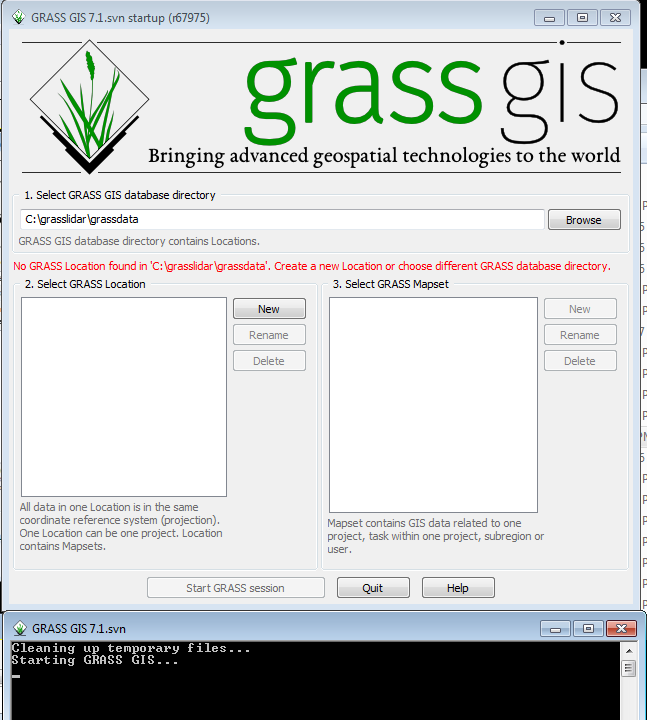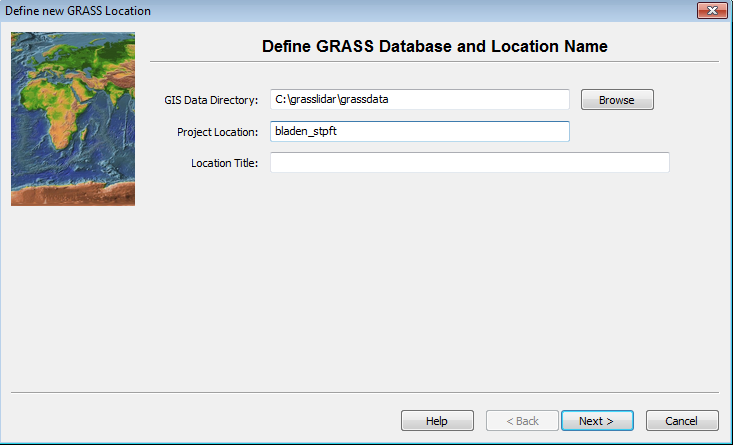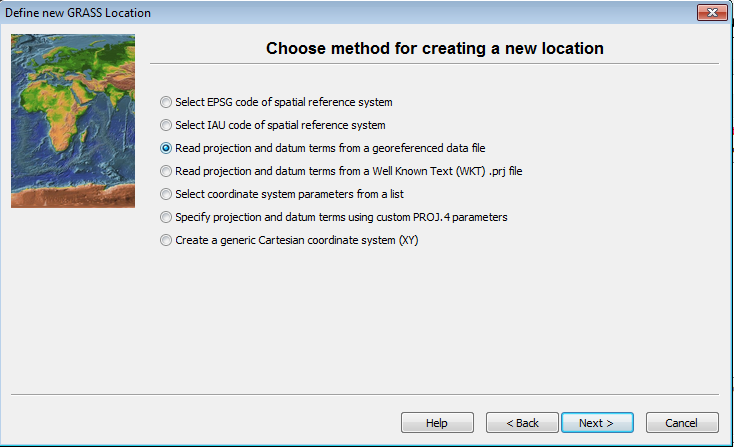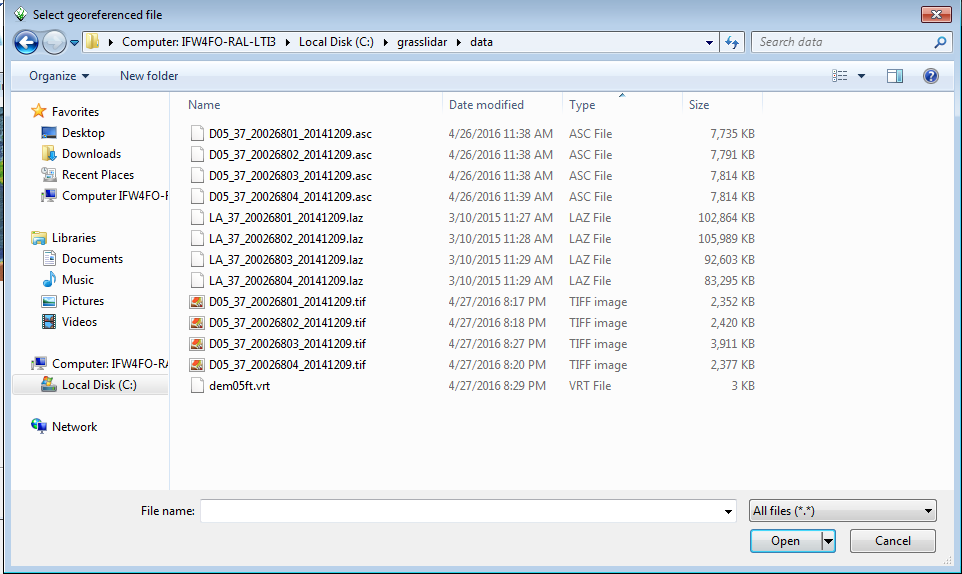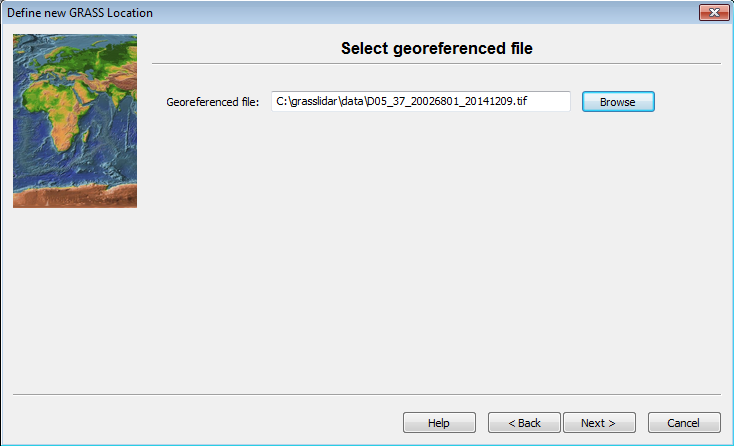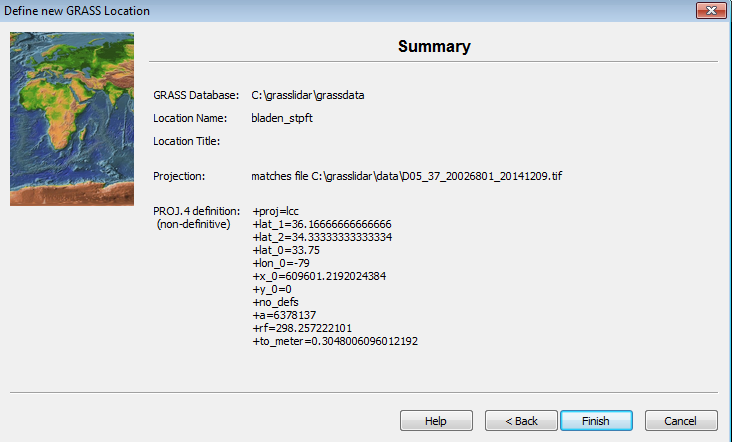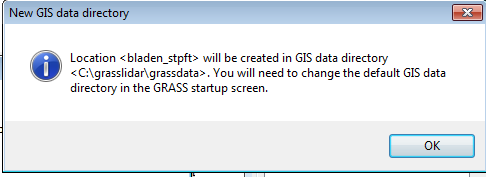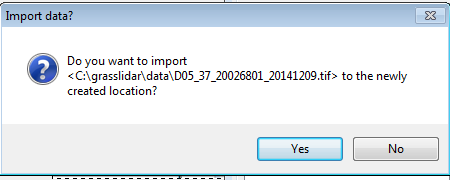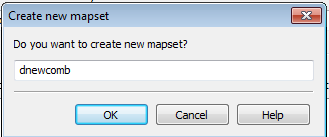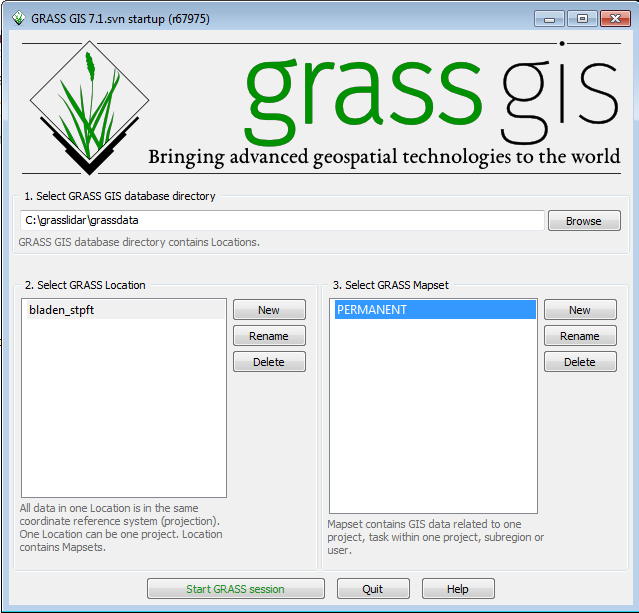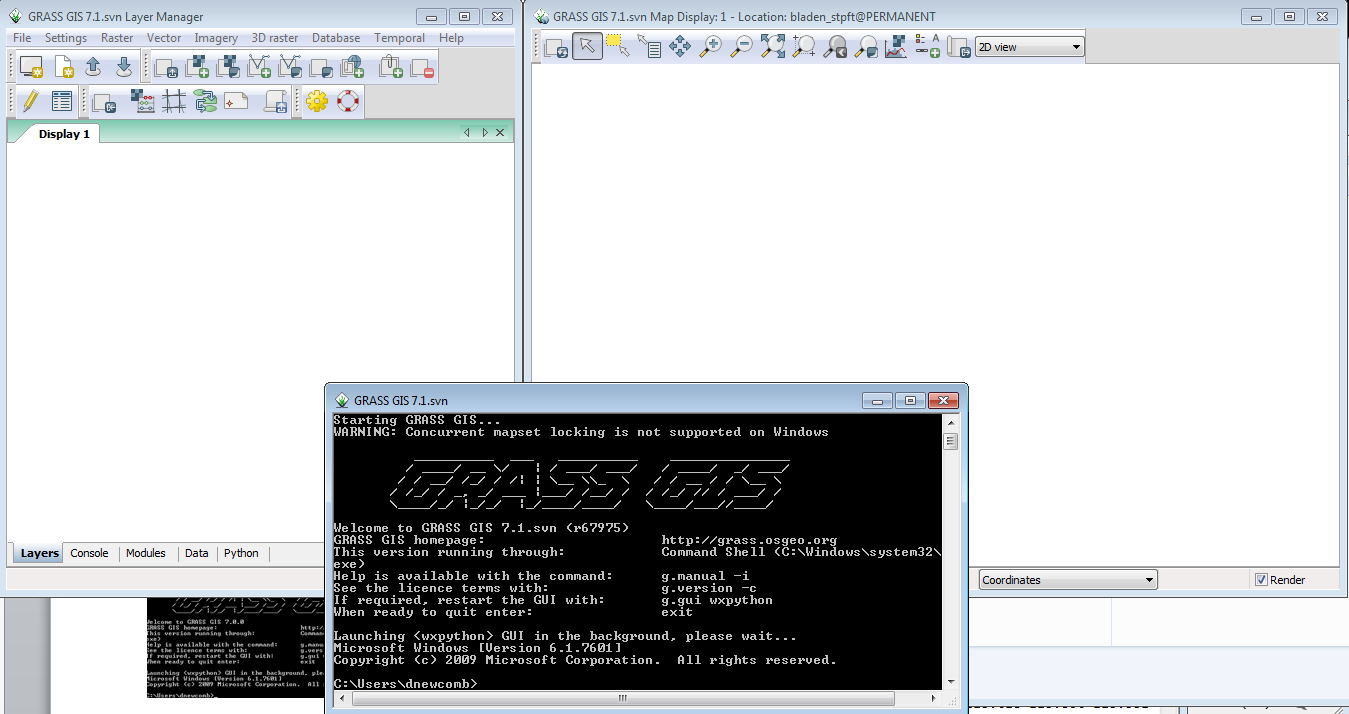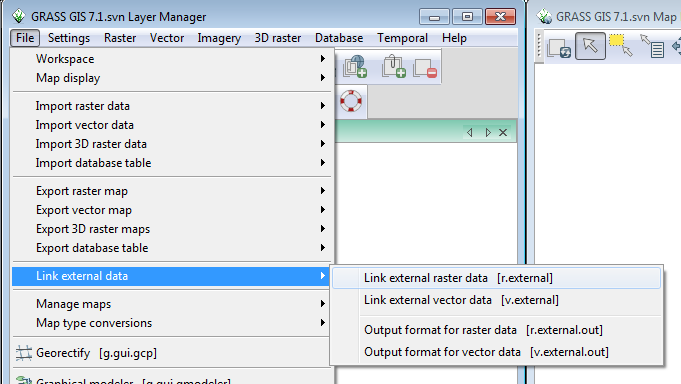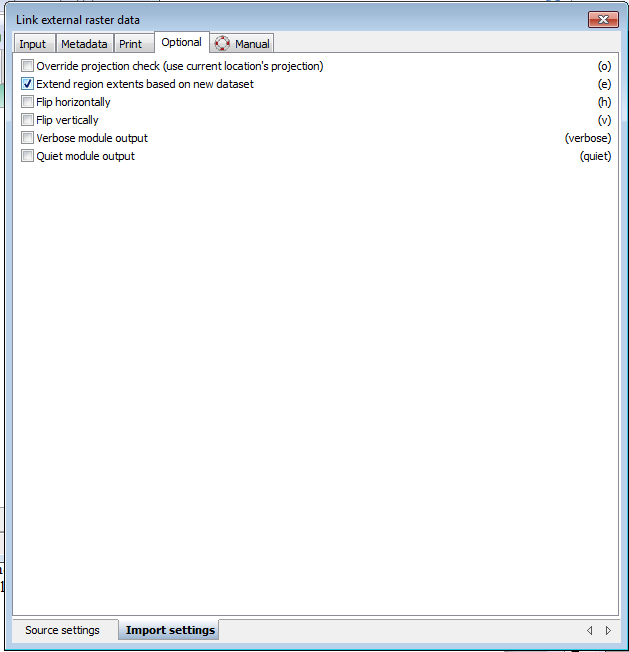Lidar Analysis of Vegetation Structure
This exercise was initially created as a session in a GIS training for the U. S. Fish and Wildlife Service in May, 2016 by Doug Newcomb.
Session Objectives
At the conclusion of this session, you will be able to:
- Open GRASS GIS and Create a Location from an existing file
- Link external raster elevation data to the Location
- Import LAS point cloud data to assess DEM accuracy
- Import LAS point cloud data to create various vegetation structure products
- Export raster vegetation structure data layers from GRASS to GeoTiff
Material Created By: Doug Newcomb (May 2016)
Software: GRASS 7.2
Directory Path: D:\grasslidar (assumed at some places, use any directory you want)
Image Files: D05_37_20026801_20141209.tif D05_37_20026803_20141209.tif D05_37_20026802_20141209.tif D05_37_20026804_20141209.tif
LAZ format LiDAR files: LA_37_20026801_20141209.laz LA_37_20026803_20141209.laz LA_37_20026802_20141209.laz LA_37_20026804_20141209.laz
Data can be accessed online here
Elevation data is commonly used in landscape analysis, but it is also quite useful in vegetation analysis. This exercise will walk you through basic analysis of a LiDAR point cloud to better understand vegetation structure.
All data are located in c:\grasslidar\data, unless otherwise noted.
Step 1: Creating GRASS Workspace
The first thing to do when starting to work in GRASS is to create a Location. GRASS Locations are single projection areas with a defined resolution and extent. The initial location can be easily created from an existing data set.
In Windows, Click on Start-->All Programs-->GRASS GIS 7.2--> GRASS GIS 7.2 GUI
Two windows will open, the GRASS startup window ( to select or create a workspace) and the GRASS command prompt.
- Click on the New button between the Location and Mapset windows. This will bring up the menu to define a new Location.
The GIS Data Directory is where all of your grass workspaces will reside. Creating a new directory with a unique name for grass data is recommended. This directory can be created anywhere that the user has write access. Project location is a subdirctory name for this particular project. Like with ArcGIS, it is best to avoid spaces in Directory names to avoid problems down the road. Click on the Browse button and select c:\grasslidar\grassdata. The data is from Bladen County, NC and is in the North Carolina State Plane NAD83(2011) projection with units feet, so call it bladen_stpft
- Enter the Data Directory and Project Location – this brings up the location creation method menu
- Click on the radio button for Read projection and datum terms from a georeferenced file.
- Click Next
This brings up the georeferenced file dialog.
- Browse to C:\grasslidar\data and look at the data available:
In this directory, you will see 4 file types: asc, laz, tif, and vrt. LiDAR data is usually distributed as tiles of point clouds and Digital Elevation Models (DEMs) ASC and TIFF are common file formats to distribute DEM data. Asc is an ArcInfo ASCII Grid file, which is simply a text file representing a grid and does not have any projection data associated with it. Generally .tif files distributed as DEMs have projection information embedded in the file. LAZ is an open method of compression for LAS files. VRT is a virtual raster index of the 4 .tif files in this directory.
In this directory, and select D05_37_20026801_20141209.tif as the georeferenced file.
- Click Next.
GRASS reads the georeference data from the elevation file and displays the projection data.
- Click Finish
The next message relates to setting a default path for GRASS startup.
- Click OK
In the following message, you have the option if importing the data set you used for georeferencing the workspace.
- Click No
The location has been created. You are prompted to set the default region extents and resolution.
- Click No
You are then prompted to create a new mapset.
- Click Cancel
You have finished creating a Location with the default PERMANENT mapset. The next time GRASS is started, you can either select an existing Location and Mapset, create a new Mapset within the Location, or create a new Location.
- Click on the PERMANENT Mapset
- Click Start GRASS session
You will then see the Layer Manager Window, the Map Display Window for Display 1.
Step 2: Adding a data layer
We are now ready to add data to the Mapset. We can either import Raster and Vector data using the GDAL translation library, or we can link to existing external data sets read only to reduce data duplication. In this case, we will link to the 1m elevation data we used to create the Location using the r.external command.
- In the Layer Manager window, click File-->Link external data-->Link external raster data.
This brings up the r.external dialog.
We would like to treat the 4 tiles of LiDAR and elevation data as a single seamless unit, to accomplish this, we are going to first select the demo05ft.vrt image index as our input raster.
- Browse to C:\grasslidar\data\dem05ft.vrt and select it. Note that the Add layers into layer tree is checked. For large data sets, leave this unchecked.
- Click on the import settings tab at the bottom
- Click on the box for Extend region extents based on new dataset.
- Click back to the Source settings tab and Click Link.
The Layer Manager window will switch to the Command console tab and display the results of the r.external command . Click the close button on the r.external dialog.
